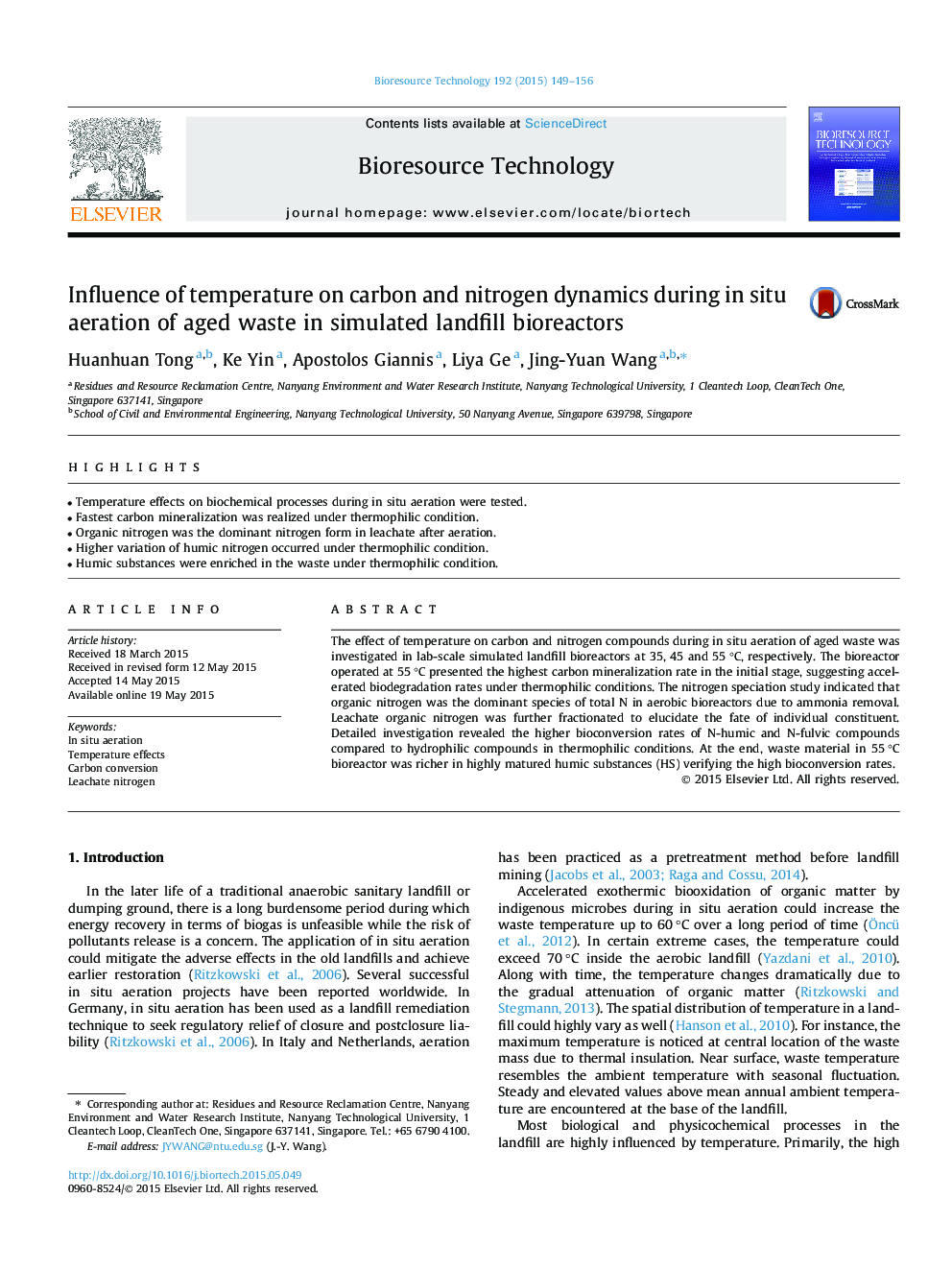| Article ID | Journal | Published Year | Pages | File Type |
|---|---|---|---|---|
| 7074150 | Bioresource Technology | 2015 | 8 Pages |
Abstract
The effect of temperature on carbon and nitrogen compounds during in situ aeration of aged waste was investigated in lab-scale simulated landfill bioreactors at 35, 45 and 55 °C, respectively. The bioreactor operated at 55 °C presented the highest carbon mineralization rate in the initial stage, suggesting accelerated biodegradation rates under thermophilic conditions. The nitrogen speciation study indicated that organic nitrogen was the dominant species of total N in aerobic bioreactors due to ammonia removal. Leachate organic nitrogen was further fractionated to elucidate the fate of individual constituent. Detailed investigation revealed the higher bioconversion rates of N-humic and N-fulvic compounds compared to hydrophilic compounds in thermophilic conditions. At the end, waste material in 55 °C bioreactor was richer in highly matured humic substances (HS) verifying the high bioconversion rates.
Keywords
Related Topics
Physical Sciences and Engineering
Chemical Engineering
Process Chemistry and Technology
Authors
Huanhuan Tong, Ke Yin, Apostolos Giannis, Liya Ge, Jing-Yuan Wang,
